I’m always delighted when Star Wars takes advantage of May the Fourth, and today was no exception with the premier of The Bad Batch on Disney+.
The Plot

The Bad Batch characters still star Hunter, Tech, Wrecker, and Crosshair, who were all introduced in the beginning episodes of The Clone Wars season 7. At the end of that episode arc, Echo, long thought dead from a previous season, is revealed to be alive and joins their ranks.
The Bad Batch are so named because they are genetically defected in a way that gives them enhanced skills. They call the clone troopers “regs” to denote they are “regular” clones as opposed to defective. Though they are described as being more competent than an army, most of the genetically standard clones carry some disdain for the Bad Batch.
The episode opens where The Clone Wars ended: Order 66. The Bad Batch becomes a neat narrative device to experience this from the clones’ point of view, in a way that couldn’t necessarily happen with Captain Rex and Ahsoka on The Clone Wars. Though the viewer witnesses another Jedi and padawan pair become target practice for the clones, a truly understated moment of grief and loss occurs when the Bad Batch returns to Kamino. A body on a stretcher, face hidden by a sheet, passes them by. A hand falls to the side, still loosely holding a lightsaber, which clatters to the floor and is left behind by the clones transporting the body. The moment becomes a horrific nod to the Jedis’ sentiment towards their weapon: this is your life–don’t lose it.
Long time Star Wars viewers of both the various shows and movies will recognize the Jedi and padawan pair as Depa Billaba and Caleb Dume. These first fifteen minutes unite several threads from different medias into a cohesive whole even as a new narrative is spun.
For most Star Wars fans, this is not the first time we’ve seen Order 66 because we enjoy emotional torment, so the Bad Batch’s confusion is an inside secret for us. It was easy making Echo’s chip damaged from the various traumas he experienced since he was left for dead. He’s disconnected from the other “regs” but still new to the Bad Batch. More emotions from Echo wouldn’t have been amiss, but the viewer still experiences the Bad Batch’s slow wonder of what the heck is going on as one of their own slowly succumbs to the chip.
Life in a new Empire seems pretty normal, almost. The Bad Batch are put through what turns into a harrowing battle simulation as they show their skill and value to Tarkin, who is delightfully obnoxious as he evaluates their performance. They are sent on a mission to wipe out Separatist insurgents as a test of loyalty, which they fail as they meet with Saw Gerrera. Rather than carrying out the mission, they choose instead to withdraw back to Kamino in order to rescue a newly revealed clone.
The new clone’s introduction was curious to me, but I’m excited to see what’s in store for them and the rest of the Bad Batch.
The Good
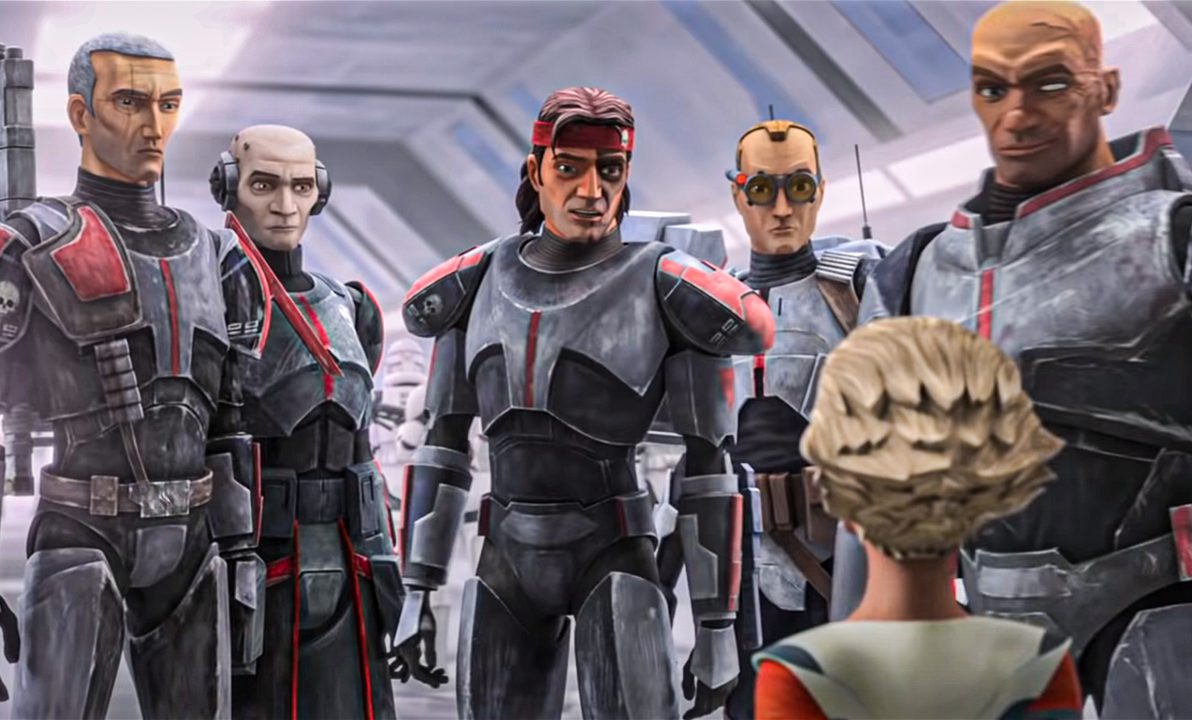
As always, Star Wars’ main strengths lie in its characters, though there were missed opportunities for angst in this premiere. If Echo had asked about Rex my heart may have cracked. The chilling moment as the Bad Batch witness Palpatine proclaiming himself Emperor serves as a beautiful grace note to highlight the oncoming character conflicts, especially as the other clones cheer the Emperor on.
It is odd that Echo was not utilized more in this story, especially since one of the Bad Batch clones repeats the haunting refrain of “good soldiers follow orders” throughout the episode. Viewers will recognize it as the phrase that culminated in Tups’ and Fives’ tragic stories, and the repetition of it in this premiere drives a wedge between these clones, who are known for not following orders or protocol. It’s kind of their thing.
The question of Republic or Empire, as raised in other Star Wars stories such as The Mandalorian, appears again here. Crosshair essentially says there is no difference, to which Tech replies, “The systematic termination of the Jedi is a big one for me.”
The viewer is left to ask the question, And what of the systematic termination of the clones on the battlefield?
Star Wars doesn’t tend to answer this question, letting it sit with the viewer or reader without a clear cut answer. I’m hoping that The Bad Batch will continue poking at this question, letting us see more clones react to their long, forced labor in service of the Republic with more varied and strong emotions, with or without their programming.
With the Bad Batch back on Kamino, the narrative made full use of the opportunity to reintroduce AZI-3, the absolutely delightful medical droid who helped Fives discover the presence of the chip. What a great narrative choice. AZI-3 is just as delightful here as they were back in The Clone Wars. Hopefully, we’ll see more of them, because what is Star Wars without a cute droid or two, especially if that cute droid might be able to help the Bad Batch member with their chip problem. We already know that AZI-3 lost their memory of helping Fives, but what if that, too, could be regained along with the clone’s agency?
The Bad aka Disney’s White Washing Problem
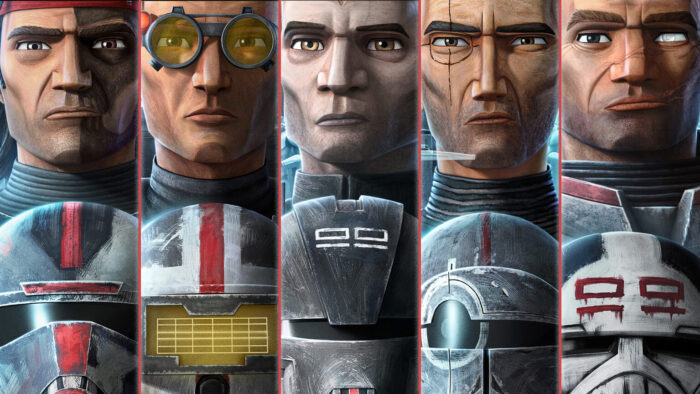
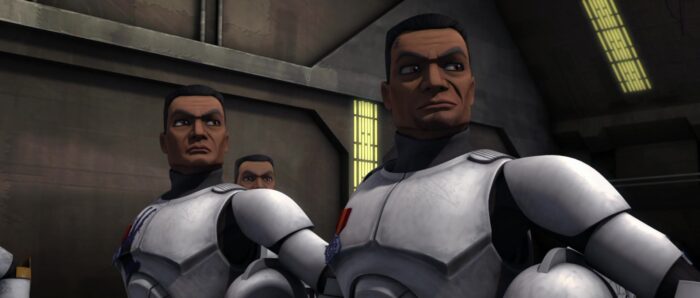
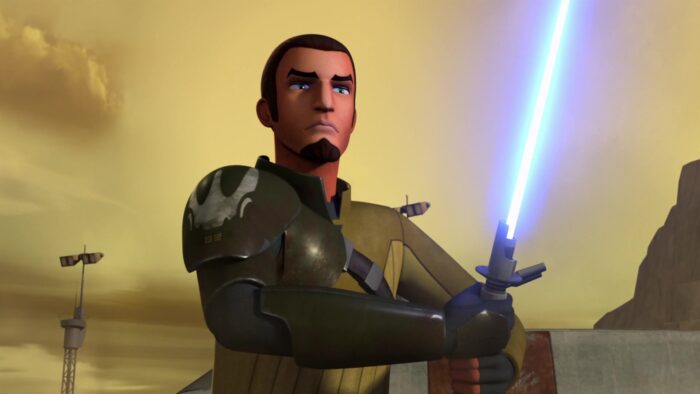
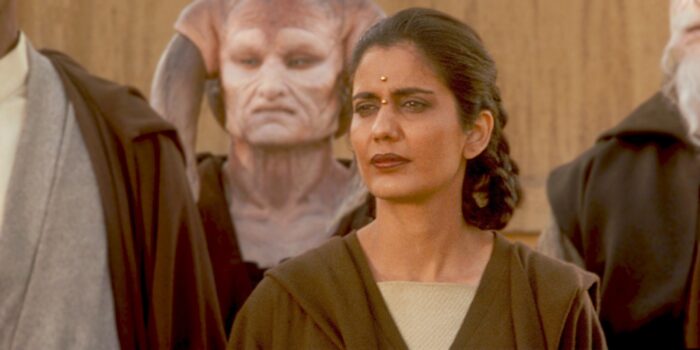
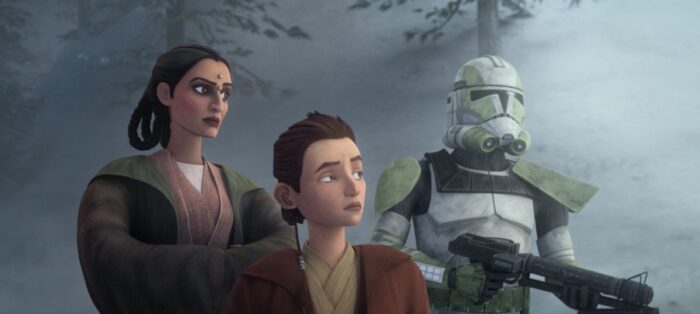
Source: Disney
Star Wars has a racism problem, and The Bad Batch contributed to that instead of dismantling it. Both Depa and Caleb are whitewashed versions of themselves that are nearly unrecognizable.
The clones comprising the Bad Batch are heavily whitewashed as well. If you compare the Clone design over the series this is very prevalent. The screenshot I used to demonstrate the white-washing is from season one of Clone Wars.
It looks like they also made Depa younger which I’m not fond of. It’s okay to have older women kicking ass, I promise. Unlike Caleb, there really was no reason to make her look so youthful.
Overall, the whitewashing isn’t a good look for Disney, and I’m disappointed with them.
In Conclusion
I had my reservations regarding The Bad Batch, but I’m intrigued where this particular story will go. I’m here for the anguish as one of their brothers will pursue them across the galaxy far, far away, and for the joy in life I hope they’ll find.
The soundtrack captures this specific motif of the story. Music swells in wonder as they make the jump to lightspeed at the end of the episode. Stars fill Omega’s wide struck eyes. For the first time, these clones are truly free to forge their own destiny.